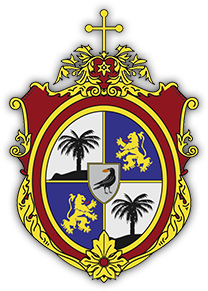Peterborough Cathedral.
Photo: 31 July 2014.
Source: Own work.
Attribution: Photo by DAVID ILIFF.
Licence: CC BY-SA 3.0.
Author: Diliff
(Wikimedia Commons)

Text from Wikipedia - the free encyclopædia,
unless stated otherwise.
In general, from the time of The Reformation, onwards, apart from necessary repairs so that buildings might remain in use, and the internal adornments of successive generations who wished to be commemorated, there was little building work and only piecemeal restoration.
This situation lasted for about 250 years, with the fabric of many major Cathedrals suffering from neglect. The severity of the problem was demonstrated by the spectacular collapse of the Spire of Chichester Cathedral, which suddenly telescoped in on itself in 1861.[2][4]
By this date, Mediæval architecture was back in fashion. A growing awareness of the value of England’s Mediæval heritage had begun in the Late-18th-Century, leading to some work on a number of the Cathedrals by the architect James Wyatt.
Ripon Cathedral has a “cliff-like” East End,
typical of English Gothic architecture.
Photo: 30 August 2005 (original Upload date).
Source: Transferred from en.wikipedia to Commons.
Author: Soloist at English Wikipedia
(Wikimedia Commons)

The critic John Ruskin was an ardent advocate of all things Mediæval and popularised these ideas. The architect Augustus Welby Pugin, who designed mainly for the growing Roman Catholic Church, set himself to recreate not only the structural appearance of Mediæval Churches, but also the richly-decorated and colourful interiors that had been almost entirely lost, existing only as a painted Screen here and there, a few tiled floors, such as those at Winchester and Canterbury and the intricate painted Wooden Ceiling of Peterborough Cathedral.[5][9]
The Victorian era saw the restoration of all of England’s Cathedrals and remaining major Abbey Churches. Some buildings left incomplete were completed at this time and the greater part of existent Church furniture, fittings and Stained-Glass dates from this period.
Postcard, 1888.
This File: 9 January 2013.
User: Hogweard
Author: Unknown.
(Wikimedia Commons)

The twenty-six Cathedrals described in this Article are:
Bristol;
Canterbury;
Carlisle;
Chester;
Chichester;
Durham;
Ely;
Exeter;
Gloucester;
Hereford;
Lichfield;
Lincoln;
Manchester;
Norwich;
Oxford;
Peterborough;
Ripon;
Rochester;
Saint Alban’s;
Salisbury;
Southwark;
Southwell;
Wells;
Winchester;
Worcester;
York.
In addition, there is reference to Westminster Abbey
and the ancient Cathedral of London, generally known
as Old St. Paul’s.
PART SIX FOLLOWS.

































